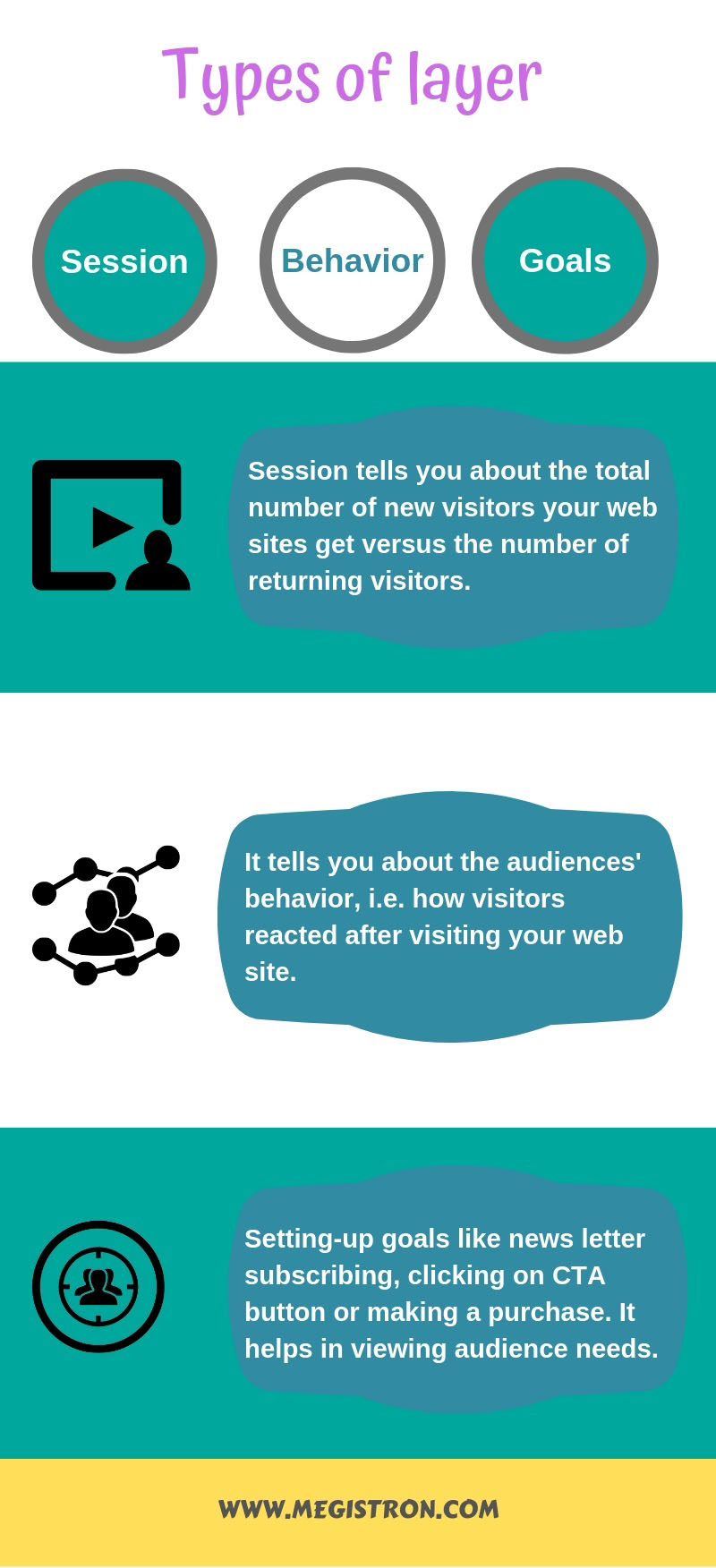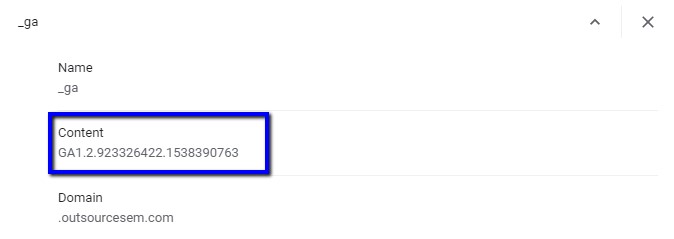Google ads have introduced a remarkable feature in analytics tool which helps you to identify the “new vs returning visitors”. Users who have visited your web site “first time” on a particular device through brand awareness or any other mean are called new visitors. While, the later one are those who have visited your web site earlier and are re-visiting in the selected time period i.e. time mentioned in browser cookies.
How Google analytics tool helps you to differentiate between new visitors’ vs returning visitors?
In layman’s term, it is clear to understand from above, that new visitors are the first time users and returning visitors means those who have visited again. But, Google analytics (GA) describe it in a different manner. According to GA, differences between them can be explained as follows:
- GA ask you to segment tables in “new vs returning visitors”. Further, these columns will apply to all the columns of conversions.
- Also, you can monitor previous visits & then your conversions can be segmented in the store visit conversion report, it will be based upon the time period you choose for the “customer lapse window.”
- Basically, there are four conversion windows you can choose from for your returning visitors list:
- Custom (lies between 1 & 180 days)
- 60 days
- 90 days
- 180 days (by default).
Also, your custom option can’t be more than 180 days.
E.g.- If you choose “90 days”, store visits will be considered new if they are from the visitors who haven’t visited in the last 90 days.
Where to find this section in analytics tool?
New vs returning visit section can be easily found in the analytics tool. Go to google analytics tool’s dashboard: select Audience> Behavior> New vs Returning. This segment is useful in many ways. Suppose your business goals is to increase your sales from an existing customer, then, monitor carefully which keyword and ad group reaches more to returning visitors. Also, keep in mind to focus on budget & bid management and extended keyword there.

Types of basic portion in “New vs Returning” segment:
There are mainly three basic portion of this segment, they are:
- Session
- Behavior
- Goals.
- Session: You can compare here the total number of new visitors your web sites get versus the number of returning visitors. Here, you will get the visitor type and session time percentage of each type.
Mainly, your target will depend upon the nature of business and website’s type you have. Suppose, your web site is content & blog based then you’ll want more returning visitors who are in search of more new content. In case of e-commerce website, they will mostly think off new visitors. If you had run a great digital marketing campaign since last two-three months with lots of visitors. Thereafter comparing the number of visitors between present and past month due to success of campaign then it happens generally that you will see more new visitors this month.
- Behavior: This section tells us about the behavior of returning and new visitors. That is, how these two types of audience category reacted after visiting your web site. Here “Average session duration” means the average time duration an individual users spending on your site before leaving. While, “Pages/session” stands for the number of individual pages a user has visited before leaving your web site & “Bounce rate” signifies how many users have left your website before visiting the second page.
- Goals: If you have setup your goals for your ad campaigns through Google analytics likewise: newsletters subscribing, clicking on call-to-action button or making a purchase then this data will be helpful to you to see that whether new visitor and returning visitor fulfilling their objectives to meet your goals.
Now, you can observe that this behavior & goal is something which separate the border between new visitor and returning visitor. You can measure these metrics in the table but getting a perfect result is impossible. Still, you can conclude from the report and have a great results or desirable outcomes.
Various issues you may face while working with new vs returning visitors segment:
It is possible that a visitor may visits your website from different browser and different website or simultaneously from both. Then in that case, same person will be counted as a new visitor or returning visitor more than once by Google analytics. It is because client id is not shared between different browsers and devices. We will discuss about client id in the next section. It’s also important to note that Google uses different techniques to measure new & returning visitors. Suddenly there will be chances of errors in different reports. Also there is a chance that same user may be counted twice for two different mediums.
For e.g.- If a visitor has visited your website from mobile device and also from desktop then GA will count it as two new users.
Client-id: It is the combination of unique random numbers and the first time stamp of any particular user which is issued by GA tool. Here, first time stamp is the visit of a user for the first time they reach you or it’s a time when GA cookie was set for that user. It is set by _ga cookie which is universal. Also, client-id is issued to each & every user of your web site.
How to find client-id for your site domain?
You can easily find client-id for your site domain. (https://support.google.com/analytics/answer/6205850?hl=en) To get this follow the instructions mentioned below:
- Go to menu > setting > advanced setting > privacy & security > content settings > cookies > see all cookies & site data > enter your site domain in search cookies > _ga > content. This is your client-id for your site domain.

Here, first field i.e. “GA1” represents the version name, second field i.e. “2” represents the number of components, third field represents the set of “unique random numbers” & the fourth one represents the “first time stamp”.
Now, the third field and fourth field i.e. set of unique random numbers & first time stamp together makes the client-id.
What are the benefits of using it?
- You can see how your audiences are engaging with your brand by monitoring number of new & returning store visits
- You will get the clear idea about the type of audience you are influencing & how they are getting indulged with your business which will help you further develop your marketing strategy effectively
- It helps you to know how effective your ad campaigns are running by converting prospects into trust worthy visitors.
You may have a question in your mind that then How does the Google track your store visits?
If you want to enable conversion tracking stats in GA tool, it is important to note that auto-tracking must be selected in order to follow your visitors. The tracking process will start from the time they click on your ad until the time they purchase products; this conversion may occur from desktop browser, mobile devices, store visits or through an app.
When a visitor clicks on any particular ad then Google click identifier (GCLID) is tagged to the URLs, user is clicking through. If you have enabled the auto-tagging option & also you have GA tag on your web sites, then GCLID is stored in a new GA cookie which you can easily find on your site’s domain. This is the case of tracking users who are reaching to you through an online medium but you may be thinking of offline visitor i.e. “How they are being tracked if they are reaching you through an offline mode?”
Google ads uses two methods to calculate visitors through offline mode:
- Google ads conversion import
- Google ads conversion import for salesforce.
- Google ads conversion import: It enables you to import conversions to Google ads which begins when ad is clicked or call to action is made after viewing ad. While setting up an import option, it will totally depend upon the nature of lead whether it was click or a call.
- Google ads conversion import for salesforce: It is useful to track leads/conversions or both. Here, you can import offline conversions to Google ads from salesforce sales cloud. Thus, it will be quite useful in calculating that how an online investment in Google ads help you to generate offline return value.
Illustrating data for both the category:
- Suppose your new visitor is spending more time than your returning visitor. Then, in that case you may think of provide some benefits or offers to attract them to return again on your web sites likewise offering a new coupon code after their first purchase.
- If returning visitors have higher goal completion rates than your new visitors, then you should bring some changes in your strategy to push new users more towards goal completion rates. CTA (call-to-action) button can be enhanced more for the purpose of maximizing opportunity.
- Exit pop-ups can also be effective if used freely, it is used for the purpose of stating users that why you should not leave that particular site. As we have discussed earlier, e-commerce business mostly looks for new visits. Thus, there is a requirement of adding more product information or product comparison table for the first time user is visiting. So, that they can re-visit to your e-commerce website.
- Sometimes it may happens that returning visitors have higher bounce rate than new visitors. It means that quality or quantity of your pages are getting down because users are re-visiting to your page but they are not finding any useful content. So, it’s necessary for you to observe what is missing in content or if required then re-design the page in order to have lower bounce rate.
Is data trustworthy?
As we have discussed earlier, GA tool may count same user as two different new users if user has reached your website through two different devices. Since, you know that client-id is not shared between two devices. That means, you can’t add the two metrics i.e. new visitor and returning visitor to get the data of total numbers of visitors who have visited your site. Thus, new visitor + Returning visitor ≠ Total no. of visitors.
One thing is to be kept in mind that accuracy of your data will also depends upon the amount of data. Suppose your web site’s monthly visitors are very less in numbers then there will be chances of huge uncertainty built-up in your report. It can be improved if session time is increased.
Also, if your site visitors are more than the desired one, then it will be easy for you to conclude great results from your report. Less data can’t be ignored rather than it should be monitored well.
Conclusion:
After reading this blog, you may get the idea about new vs returning visitors. New vs returning visitors is an important audience demographics option which tells you about the visitors’ enrollment. We have discussed above that new visitors are the first time visitors on your web sites. While, the later one are re-visiting your web site.
This data segment tells about the users’ experience on your website, whether they find any useful contents & products they are in searching for. Or, they bounce back after visiting the first page of your web site. Also, this segment gives you a clue about audience behavior.
From this, you will get an idea about your website content & design. If it is useful for visitors or it needs some modification & re-design which will be helpful for you in enhancing business growth.
References:

